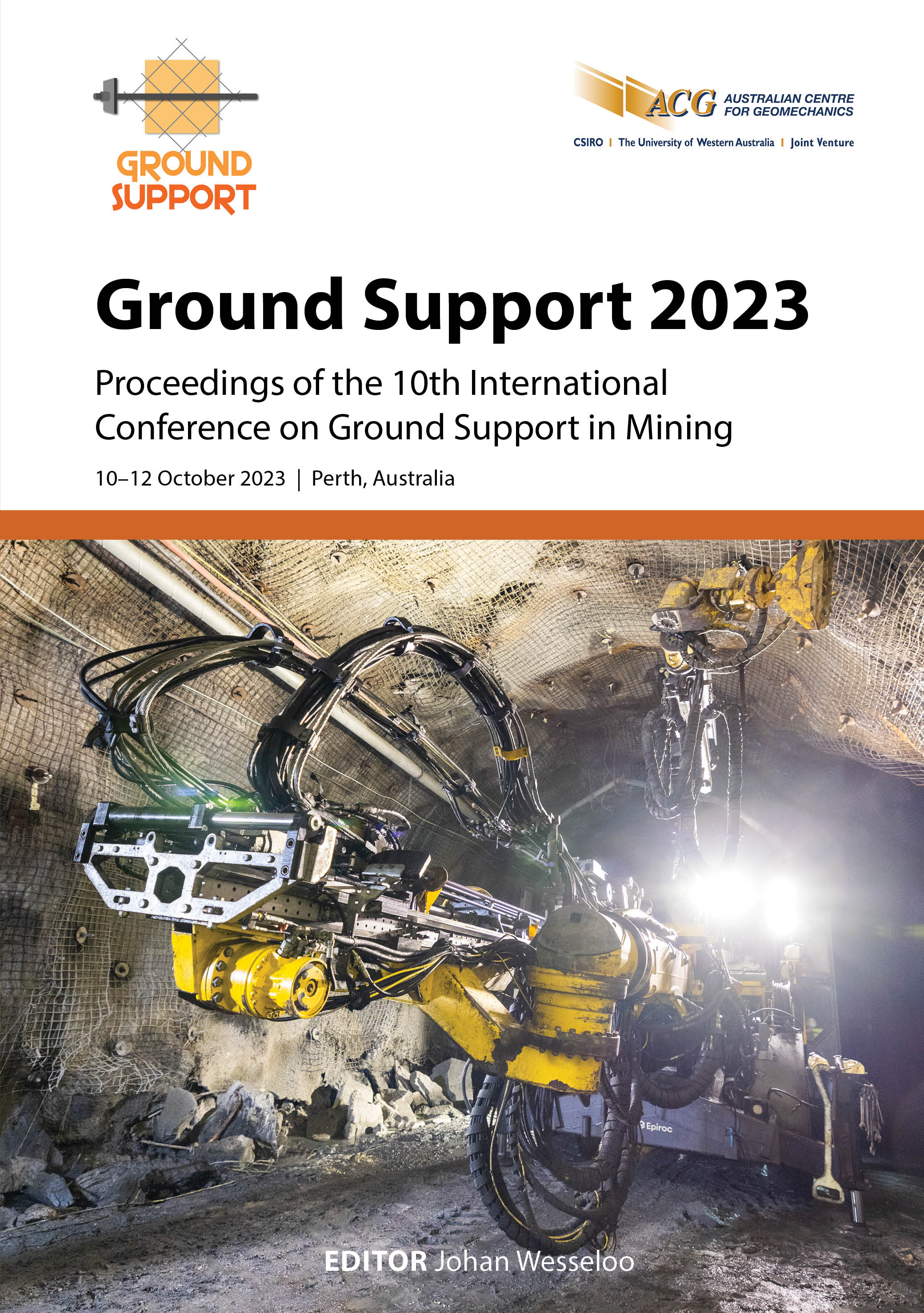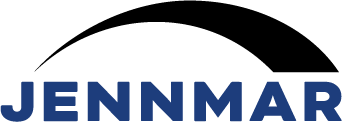Accelerated galvanic corrosion between graphitic rock from underground mines and metal coupons

|
Authors: Stazick, C; Feagan, G; Sunderman, S |
DOI https://doi.org/10.36487/ACG_repo/2325_29
Cite As:
Stazick, C, Feagan, G & Sunderman, S 2023, 'Accelerated galvanic corrosion between graphitic rock from underground mines and metal coupons', in J Wesseloo (ed.), Ground Support 2023: Proceedings of the 10th International Conference on Ground Support in Mining, Australian Centre for Geomechanics, Perth, pp. 439-450, https://doi.org/10.36487/ACG_repo/2325_29
Abstract:
Dissimilar materials, such as steel and graphite, can experience galvanic corrosion resulting in safety hazards for many industries. Rock samples from a United States mine that exhibits electrochemical properties similar to graphite were galvanically coupled to corrosion coupons in an accelerated environment. Traditional weight loss and potentiostatic measurements were utilised to investigate the rock’s observed in situ influence on metal comparable to underground support (e.g. rockbolts or steel mesh). Corrosion rates of the galvanically coupled coupons were multiple times higher than the coupons in the standard solution alone, with coupons held at higher temperature and humidity experiencing the most aggressive degradation over the testing period. Surface analysis of samples revealed extensive pitting of the steel, resembling failed bolt samples from partner mines. Metallic ground support in contact with graphitic rock has a higher potential for severe corrosion rates that could lead to premature failure of the ground support and ultimately pose a safety threat to mine workers without intervention.
Keywords: corrosion, galvanic corrosion, metal ground support
References:
ASTM International 2017, Standard Practice for Preparing, Cleaning, and Evaluating Corrosion Test Specimens (ASTM G1-03), ASTM International, West Conshohocken.
Fan, Y, Lui, W, Li, S, Chowwanonthapunya, T, Wongpat, B, Dong, B, ... Li, X 2020, ‘Evolution of rust layers on carbon steel and weathering steel in high humidity and heat marine atmospheric corrosion’, Journal of Materials Science & Technology, vol.39, pp. 190–199,
Gamry Instruments Inc. 2022, Gamry Echem Analyst, computer software, Gamry Instruments Inc., Warminster.
Gamry Instruments Inc. n.d., Polarization Resistance Tutorial – Getting Started, viewed 3 March 2023, Gamry Instruments Inc., Warminster,
Hassell, R 2008, Corrosion of Rock Reinforcement in Underground Excavations, PhD Thesis, Western Australian School of Mines, Kalgoorlie.
Heidersbach, RH 1990, ‘Marine corrosion’, in Metals Handbook, 9th edn, ASM International, Ohio, pp. 893–926.
Jones, DA 1996, ‘Galvanic and concentration cell corrosion’, in B Stenquist & R Kernan (eds), Principles and Prevention of Corrosion, 2nd edn, Prentice-Hall Inc, Upper Saddle River, pp. 179–183.
Lui, L, Li, J, Peng, M, Li, W & Lei, B 2022, ‘Macro-galvanic corrosion of tower grounding device consisting of graphite and Zn-coated steel in a simulated soil environment’, Engineering Failure Analysis, vol. 135,
Miller, BA 1975, The Galvanic Corrosion of Graphite Epoxy Composite Materials Coupled With Alloys, PhD Thesis, Air Force Institute of Technology Wright-Patterson Air Force Base, Dayton.
Roy, JM, Preston, R & Bewick, RP 2016, ‘Classification of aqueous corrosion in underground mines’, Rock Mechanics and Rock Engineering, vol.49, no.8,
Song, G-L, Zhang, C, Chen, X & Zheng, D 2021, ‘Galvanic activity of carbon fiber reinforced polymers and electrochemical behavior of carbon fiber’, Corrosion Communications, vol.1, pp. 26–39,
© Copyright 2024, Australian Centre for Geomechanics (ACG), The University of Western Australia. All rights reserved.
View copyright/legal information
Please direct any queries or error reports to repository-acg@uwa.edu.au
View copyright/legal information
Please direct any queries or error reports to repository-acg@uwa.edu.au
